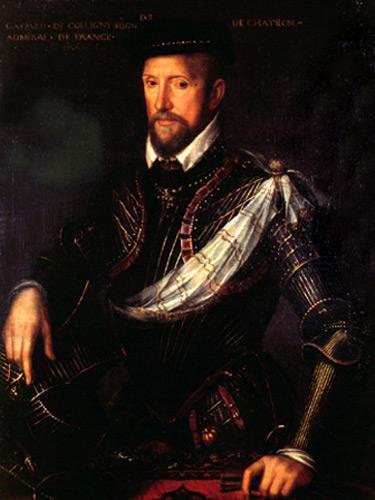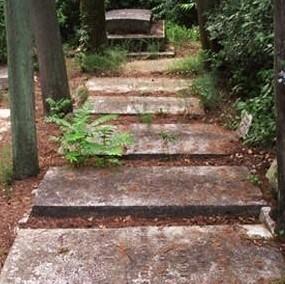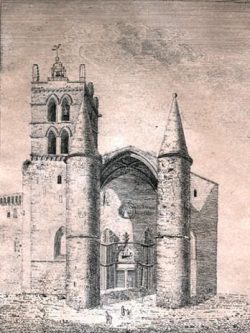Montpellier (Hérault)
In the early 16th century, the Reformation was established in Montpellier.
The Big temple, built before the Edict of Nantes
After 1560, services were held in private houses, e.g. the Dessandrieux house, the Petit Scel, actually the Marché aux Fleurs Square, and at night in the Didier Baudin house or the Mage house, now the site of the Facultés Palace.
In 1561, the Reformed took possession of the church of Notre-Dame-des-Tables, then of the Saint-Pierre Cathedral. But Pierre Viret preached moderation and sent the Protestants back to the Mage house.
1583 : construction of the Big temple, on a rectangular plan, actually the Chabaneau Square. The date of the inauguration was engraved, along with the armorial bearings of François de Châtillon, the son of Gaspard II de Coligny.
The Small temple
After the Edict of Nantes (1598), the Small temple was built on Saint Côme Square and inaugurated in 1603.
From disorder to destruction
During the 17th century, the city was to go through times of great disorder, known as the “Grand Harlan”. Louis XIII himself came and signed the peace treaty in 1622. A general amnesty was proclaimed. Rohan, the Protestant military commander was appointed governor of Nîmes. Peace lasted for forty years.
After 1660, Nicolas de Lamoignon de Basville, quartermaster to the King, ignored the latter’s orders and repressed the Huguenots and Camisards until 1718.
1670 : quartermaster Basville had the Small Temple demolished.
1682 : Louis XIV ordered the Big Temple to be destroyed within twenty-four hours. The Reformed themselves were made to smash everything, including the benches, beams, etc. Then the spoilage was taken to the Protestant graveyard situated within the park between the Comédie theatre and the railway station square, the present-day d’Oblion Street.
1698 : year of bloodshed in Montpellier. Preachers were tortured or executed on the scaffold. This went on until the Edict of Tolerance (1787).
Montpellier (Hérault)
Montpellier
Bibliography
- Books
- DUBIEF Henri et POUJOL Jacques, La France protestante, Histoire et Lieux de mémoire, Max Chaleil éditeur, Montpellier, 1992, rééd. 2006, p. 450
- LAURENT René, Promenade à travers les temples de France, Les Presses du Languedoc, Millau, 1996, p. 520
- REYMOND Bernard, L’architecture religieuse des protestants, Labor et Fides, Genève, 1996
Associated notes
-

Gaspard de Coligny (1519-1572)
Gaspard de Coligny born in the influential Châtillon family, was naturally at the service of the King of France. However, after being made prisoner at the siege of Saint Quentin,... -

The Edict of Nantes (1598)
This was Henri IV’s major achievement : the terms of this edict ensured the peaceful coexistence of Catholics and Protestants and brought a stop to all hostilities in France after 36 years... -

Les tombes protestantes
La Réforme a introduit l’idée que le lieu d’ensevelissement est indifférent. Elle répudie tout culte rendu aux morts. Aucune cérémonie funèbre n’est prévue, le pasteur n’assiste pas à l’ensevelissement. Les... -

Pierre Viret (1511-1571)
Pierre Viret devoted his life to teaching theology and spreading the Reformed faith. He was known as an outstanding preacher.


